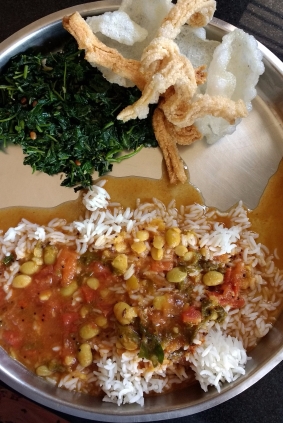I never realised that I am food explorer until lately. It’s been quite a journey understanding food memories and how to adapt it in my everyday life. Also, getting married and living with a new family sort of mixes up memories. A bit from here, a bit from there and also the new… thus my food journey continues…
Somewhere it has been a conscious decision on not disliking any vegetable. Yes, we all have our preferences and it is tough to let go, especially when food is associated with a bad memory. Because I lived far from home for studies and work, sometimes far even from civilization, I respect hunger first and then taste. I guess, there is always a sense of gratitude when it comes to eating food and I hope it never changes. I don’t want the arrogance of taste to take away the feeling of basic necessity that hunger brings in.
Anyways, the post is not about my food philosophy but about the conscious effort I’m making to include all vegetables while cooking. One vegetable that I realised I had been avoiding for a couple of years now is the Red pumpkin. For a really short period when I lived in Assam, in a working women’s hostel, I think I had had a overdose of this particular vegetable. And later when I moved in with my parents my mom would just boil it with other vegetables and create some side dish for chappati. Basically I think, somewhere the flavor of the vegetable was ruined for me.
Here in Bangalore, no one thought of buying pumpkin and when I asked about it, it was avoided because it was sweet. I agree, even I’m not too fond of sweet things in my meal. When my first attempt to make a side dish out of it failed, I gave up.
A couple of weeks ago when I went to visit my friend’s parents unannounced, her mom had just cooked a simple meal of sambar and rice. As always she offered to mix the sambar rice for me with a spoon of ghee. There were big chunks of a vegetable and when I pressed it with my fingers it almost felt like potato. And there was a strong aroma which was not like regular sambar, this was of mustard, and that is how I discovered…. Sihi Kumbalakai Sasmi (Red pumpkin in mustard & coconut gravy).
Since I didn’t find the recipe online, or more importantly didn’t know what to type on Google to search, I got the recipe from my friend’s mom. I think this recipe needs to be typed and recorded. Especially if someone is trying to cook something different using Red pumpkin.
*Note: One can use Malabar cucumber instead of red pumpkin as well.

Serves: 3 to 4
INGREDIENTS:
Red pumpkin – 250 gms (chopped into big cubes)
Tamarind extract – 1/2 cup
Hing – 1/4 tsp
Turmeric – 1/4 tsp
Jaggery – 1/2 tsp
Salt to taste
To grind:
Grated coconut – 1 cup
Dry red chillies (local Bydagi) – 3 (more if you want spicy)
Urad dal – 3 tsp
Mustard – 1/2 tsp
Jeera – 1/4 tsp
Seasoning:
Oil – 2 tsp
Mustard – 1 tsp
Red chillies – 2
METHOD:
- Pressure cook the Red pumpkin with very less water for 1 whistle. You can also directly cook it in the stove, since it doesn’t take much time.
- While this is happening, you can dry roast the ingredients for grinding (except coconut). Roast each ingredient separately to avoid burning them.
- Once the spices have cooled down, grind it into a paste with the grated coconut using little water.
- Mix the tamarind paste with the boiled pumpkin and let it cook till the rawness of the tamarind has reduced.
- Add the ground paste to it, with turmeric, hing and salt to taste. If the tamarind is strong, add jaggery to balance it off.
- Season it with mustard seeds and red chillies, and your Sihi Kumbalakai sasmi is done!
My friend loves it with hot chappatis and of course, it goes really well with hot rice as well!
Hope this brings some happy food memories.








